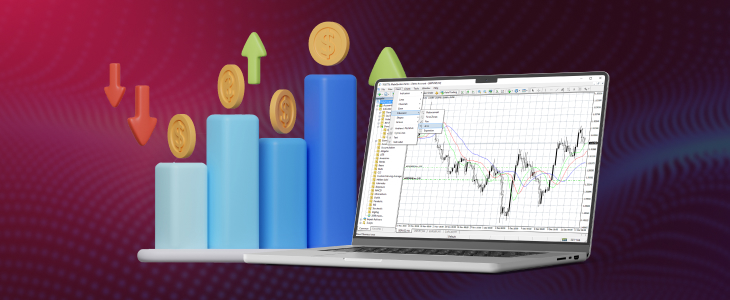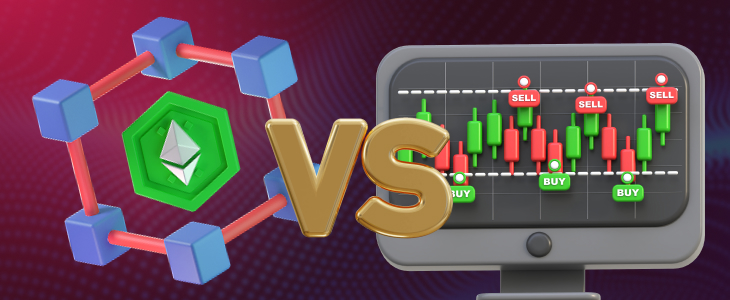Foreign exchange markets depend on the real-time timeliness of data. Institutional online trading platforms and DeFi protocols require a high-quality FX price feed that informs trading decisions, risk management, and the initiation of smart contracts. Historically, central providers such as Bloomberg and Reuters have acted as gatekeepers in this capacity, providing fast and authoritative data but at a cost in terms of potential vulnerabilities like a lack of transparency and single points of failure. In this article, we are going to learn the fundamental distinction between decentralized oracles vs centralized FX price feeds. So, let’s get started!
What Are Centralized FX Price Feeds?
A single entity or a short list of trusted providers control centralized FX price feeds by collecting and supplying exchange rate data. Liquidity providers send real-time bid and ask prices to feed suppliers, such as major banks or data vendors, who then package and distribute FX prices through bundling software.
Convenient and speedy, they are susceptible to data tampering and single-point-of-failure attacks. They are heavily utilized by traders for brokers such as MetaTrader 4, particularly for CFD brokers.
What Are Decentralized Oracles?
Decentralized oracles utilize a network of autonomous nodes to retrieve FX data from multiple sources and relay it to blockchain networks. The nodes verify and come to consensus on the data before relaying it to smart contracts. The system offers transparency, reduces the potential for tampering, and increases censorship resistance.
Similarly, users consider alternative options to obtain any required service. Decentralized oracles give consumers access to verifiable, trusted data inputs.

Key Differences Between Centralized and Decentralized FX Price Feeds
The most basic difference between decentralized and centralized FX price feeds is their architecture and trust models. Both provide accurate FX information, but they provide it in a different manner, which affects their resilience, transparency, and dependability.
Here are the key differences described below:
- Data Source & Aggregation: Centralized feeds gather information from a reduced set of interbank market makers and liquidity sources and generally apply proprietary algorithms for best pricing. Decentralized oracles, on the other hand, gather data from separate independent data sources, like multiple exchanges as well as data APIs, and then validate and aggregate the above data on-chain by using cryptographic techniques and consensus algorithms to offer fault-tolerant, verifiable data sources.
- Trust Mechanism: Centralized feeds rely on trust, requiring users to believe that the data provider supplies unmanipulated and authentic data. In contrast, decentralized oracles operate on a ‘trustless’ model, where crypto-economic incentives and a decentralized set of validators ensure data integrity without depending on any intermediary. Such “trustless” capability is all-important to preserve system integrity.
- Single Point of Failure: The most significant flaw in centralized feeds is likely that single point of failure; if there’s a failure, hack, or intent to manipulate data in the central location, the entire system goes down. Decentralized oracles avoid that risk by breaking data gathering and verification up into many nodes, so failure or corruption of one node won’t poison the data as a whole. This benefit is a central plus point, especially when compared to reliance on one source only.
- Transparency & Auditability: Centralized feeds lack transparency in how they aggregate and source data, making it difficult for users to track data origins and actions. In contrast, decentralized oracles built on blockchain technology provide unmatched transparency by recording all data inputs and verification processes on a public ledger, which enables full auditability. Transparency is most likely to be the biggest strength of any sound data system.
- Resistance to Censorship: Third parties find it difficult to censor or control decentralized providers, making it harder to refuse or manipulate data. Decentralized oracles resist censorship by distributing data across multiple nodes, preventing any single entity from intercepting or altering the data flow. Most critical in maintaining financial applications’ integrity is censorship resistance.

Why FX Data Accuracy Matters in DeFi and TradFi
Accurate FX data are integral to financial stability in conventional as well as decentralized systems. Optimal functioning requires precision.
- Valuations: Smart contracts, asset prices, and financial statements are all affected by FX rates. TradFi and DeFi both rely on proper numbers for smooth function. Platforms like FXcess provide proper numbers for smooth online trading functions, either on Metatrader 4 or on their own website.
- Risk Management: Errors in FX data may result in loss of money or protocol failure. Accurate rates prevent liquidation and mispricing. It’s applicable to sophisticated CFD trading strategies as well.
- Fair Trading: Live data puts an end to arbitrage abuse and lets both protocol and traders share identical market conditions. The integrity of the forex market depends on this accuracy.
- Self-Executing Smart Contracts: DeFi contracts require precise FX inputs. Dirty data will make the wrong thing happen and hurt users. Clean inputs are not the nice-to-have component of self-executing transactions.
- Improved Decisions: From end-users to institutions, accurate FX data supports improved financial decisions for end-users that trade online, specifically CFD trading; platforms like FXcess try to provide this critical data in an attempt to facilitate the best decision-making.
Conclusion
A trade-off between decentralized oracles and centralized FX price feeds is speed vs. trust. Centralized feeds deliver fast, established services that suit traditional finance well. But rising calls for security and transparency in DeFi are accelerating the utilization of decentralized oracles.
As financial systems expand and evolve, a blend of both could become the standard. From sophisticated trading strategies to straightforward money transactions, precise and trustworthy data remains paramount. Platforms like FXcess benefit by combining strong infrastructure with trusted data sources for a seamless trading experience.
FAQs
1. Would decentralized FX price feeds be safer than centralized oracles?
Centralized feeds are secure but prone to single-point failures. Decentralized oracles are distributed, which makes them harder to attack because they’re decentralized by design.
2. Can decentralized oracles deliver real-time foreign exchange (FX) data?
Yes. Advancing technology has increased their speed, making them as fast—or even faster—than some centralized feeds, while delivering real-time data to the forex market.
3. Which platforms provide decentralized oracles for FX data?
Chainlink, Band Protocol, and DIA are notable networks offering accurate FX data to DeFi applications.
4. How do decentralized oracles guarantee the accuracy of FX data?
They come from multiple sources, pass through crypto channels, and achieve node consensus before publishing on-chain. The multi-step process ensures reliability and precision.
Disclaimer:
This information is not considered as investment advice or an investment recommendation, but instead a marketing communication. FXCess is not responsible for any data or information provided by third parties referenced, or hyperlinked, in this communication.
